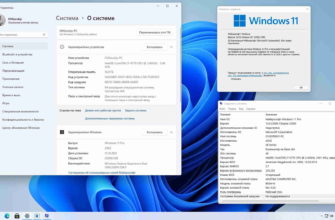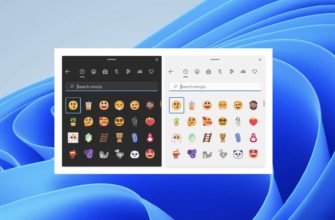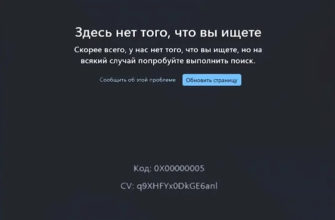
- Описание
- To connect to a Visual FoxPro database or table through the Visual FoxPro OLE DB Prov > Open Visual Studio. From the View menu, select Server Explorer. In the Server Explorer pane, right-click Data Connections, and click Add Connection. In the Data Link Properties dialog box, click the Provider tab. Select Microsoft OLE DB Provider for Visual FoxPro. The Connection tab in the Data Link Properties dialog box appears. To add a Visual FoxPro database or table On the Connection tab and in the Select or enter a database name box, type path and name of the database or table folder you want. To browse for a Visual FoxPro database or table folder, click the ellipsis (. ) button to the right of the Select or enter a database name box to open the Configure Connection dialog box. Specify a different collating sequence if desired. To test the connection, click Test Connection. If connection is successful, click OK. The database or table directory specified appears in the Visual Studio Server Explorer pane below the Data Connections node. To access a Visual FoxPro data source in code, use a valid connection string to specify the Visual FoxPro OLE DB Provider, data source or data source name. For example, you can access the Visual FoxPro OLE DB Provider using Visual FoxPro code. You can also specify an existing Visual FoxPro ODBC Data Source Name (DSN) instead of a data source. The Provider uses the data source indicated in the DSN and expands it to an appropriate Provider connection string. To connect to the Visual FoxPro OLE DB Prov > Establish an ActiveX Data Object (ADO) Connection object and create a data object in Visual FoxPro. Specify the Visual FoxPro OLE DB Provider and data source in a connection string as shown in the following code: В Copy Code This code creates a data object you can use to retrieve data. Note: Be sure to replace MyTestDatbase with the appropriate database name. Instead of a data source, you can use an existing Open Database Connectivity (ODBC) data source name (DSN) in the connection string for the Visual FoxPro OLE DB Provider. The Visual FoxPro OLE DB Provider accepts the argument, DSN = cDSNName , and uses the data source specified by the DSN as shown in the following example: В Copy Code Note: Be sure to replace ODBCdataSourceName with the appropriate ODBC DSN, for example, vfpTestData . After the connection is open, you can query the value of ConnectionString to determine the data source evaluated. A connection string includes the following attribute keywords and values: Prov > Specifies the Visual FoxPro OLE DB Provider (VFPOLEDB). Data Source= cPath Specifies the path to the Visual FoxPro database or a folder containing free tables. For example, c:Microsoft Visual FoxProSamplesDataTestdata.dbc DSN= cDSNName Specifies an existing ODBC DSN. Mode= cMode Specifies one of the following: Read, ReadWrite, Share Deny None (default), Share Deny Read, Share Deny Write, or Share Exclusive, which includes the previous two modes. For a complete explanation of connection string syntax, see the Microsoft OLE DB 2.5 Programmer’s Reference and SDK Guide. You can update Visual FoxPro Data through the Visual FoxPro OLE DB Provider using ADO. The following procedure describes three ways you can update Visual FoxPro data using data from the sample Northwind database, located in the Visual FoxPro ..SamplesNorthwind directory. Note: Be sure to replace NorthWind.dbc with the database you want to use. To update Visual FoxPro data through the Visual FoxPro OLE DB Prov > Call an update, insert, or delete command directly. To call an update command directly, use the ADO Execute method. For example:
- To add a Visual FoxPro database or table
- To connect to the Visual FoxPro OLE DB Prov > Establish an ActiveX Data Object (ADO) Connection object and create a data object in Visual FoxPro. Specify the Visual FoxPro OLE DB Provider and data source in a connection string as shown in the following code: В Copy Code This code creates a data object you can use to retrieve data. Note: Be sure to replace MyTestDatbase with the appropriate database name. Instead of a data source, you can use an existing Open Database Connectivity (ODBC) data source name (DSN) in the connection string for the Visual FoxPro OLE DB Provider. The Visual FoxPro OLE DB Provider accepts the argument, DSN = cDSNName , and uses the data source specified by the DSN as shown in the following example: В Copy Code Note: Be sure to replace ODBCdataSourceName with the appropriate ODBC DSN, for example, vfpTestData . After the connection is open, you can query the value of ConnectionString to determine the data source evaluated. A connection string includes the following attribute keywords and values: Prov > Specifies the Visual FoxPro OLE DB Provider (VFPOLEDB). Data Source= cPath Specifies the path to the Visual FoxPro database or a folder containing free tables. For example, c:Microsoft Visual FoxProSamplesDataTestdata.dbc DSN= cDSNName Specifies an existing ODBC DSN. Mode= cMode Specifies one of the following: Read, ReadWrite, Share Deny None (default), Share Deny Read, Share Deny Write, or Share Exclusive, which includes the previous two modes. For a complete explanation of connection string syntax, see the Microsoft OLE DB 2.5 Programmer’s Reference and SDK Guide. You can update Visual FoxPro Data through the Visual FoxPro OLE DB Provider using ADO. The following procedure describes three ways you can update Visual FoxPro data using data from the sample Northwind database, located in the Visual FoxPro ..SamplesNorthwind directory. Note: Be sure to replace NorthWind.dbc with the database you want to use. To update Visual FoxPro data through the Visual FoxPro OLE DB Prov > Call an update, insert, or delete command directly. To call an update command directly, use the ADO Execute method. For example:
- To update Visual FoxPro data through the Visual FoxPro OLE DB Prov > Call an update, insert, or delete command directly. To call an update command directly, use the ADO Execute method. For example:
Описание
Вы можете бесплатно скачать Microsoft OLE DB Provider for Visual FoxPro 9.0.0.3504 с нашего сайта.
Наш встроенный антивирус проверил эту закачку и признал ее как надежную для скачивания. Последняя версия программы совместима с Windows XP/Vista/7/8, 32-бит.
Эта бесплатная программа принадлежит Microsoft. Вы можете найти следующие загрузочные файлы программы: dw15.exe, vfpoledb.exe, VFPDOCS.EXE, vfp9.exe или vfp8.exe и т.д.
Файл установки занимает 1.2 MB на вашем диске. Самые популярные версии среди пользователей ПО 9.0 и 8.0.
Программа принадлежит к категории Разработчикам, а точнее к подкатегории Базы данных. Это бесплатное ПО может работать со следующими расширениями: «.sct», «.mnt» и «.mnx».
The Visual FoxPro OLE DB Provider (VfpOleDB.
Мы предлагаем оценить другие программы, такие как MicroOLAP Database Designer for MySQL, Microsoft Data Access Components или FormTool, которые часто используются вместе с Microsoft OLE DB Provider for Visual FoxPro.
Note that OLEDB is a COM technology, and that means Windows-only. As opposed to ODBC, which is platform independent (not just Windows).
The Visual FoxPro OLE DB Provider ( VfpOleDB.dll ) exposes OLE DB interfaces that you can use to access Visual FoxPro databases and tables from other programming languages and applications. The Visual FoxPro OLE DB Provider is supported by OLE DB System Components as provided by MDAC 2.6 or later. The requirements to run the Visual FoxPro OLE DB Provider are the same as for Visual FoxPro 8.0.
Q: The VFP Ole DB Provider in the .NET beta does expose parameterized views, but I have not found a way to specify a parameter. I went through the «Database» project wizard in the .NET IDE, but when I selected a parameterized view, it just returned all data. The result set was as if there was no parameterized WHERE clause in the view. — William Fields
A: Yes, the provider supports DBC events. — Mike Stewart
How do I redistribute the Ole DB provider with my applications?
This describes how to distribute the provider with your applications using InstallShield Express пїЅ Visual FoxPro Limited Edition and the merge module that is installed with Visual FoxPro 7.0.
To see an example of how to distribute the VFP 7.0 OLE DB provider with your applications, do the following:
1. Install VFP 7.0
The merge module for the OLE DB provider will be installed at the same time, by default, in C:Program FilesCommon FilesMicrosoft SharedMerge Modules , and it is called VfpOleDB.MSM .
2. Install Installhield (IS) Express пїЅ Visual FoxPro Limited Edition from the VFP 7.0 Installation CD.
3. Start IS from the Start | Programs | Installshield program group.
4. Create a new IS project (or open an existing one) , by selecting File | New.
5. Navigate to the пїЅSpecify Application Data | Objects/Merge ModulesпїЅ item.
6. Select the пїЅMicrosoft Visual FoxPro OLEDB ProviderпїЅ checkbox.
That should be all there is to it.
-MSDN KB article Q259658  «INFO: Location of Merge Modules for Windows Installer Packages»
«INFO: Location of Merge Modules for Windows Installer Packages»
-VFP Installation CD under TECHNICAL ARTICLESVFPDEPLOY.DOC written by Mike Stewart. Section «Selecting Objects/Merge Modules»
What is an Ole DB Connection String?
A string containing information on how to connect to a data source using an Ole DB Provider.
Argument Description:
Prov > File Name = Specifies the name of a provider-specific file (for example, a persisted data source object) containing preset connection information.
Remote Prov > Remote Server = Specifies the path name of the server to use when opening a client-side connection. (Remote Data Service only.)
URL = Specifies the connection string as an absolute URL identifying a resource, such as a file or directory.
How do I get the Connection String needed to use Ole DB?
- Create a dummy empty file
- Using something like Notepad
- Or on the desktop with New / Text File
- Rename the file, changing it’s extension to «.UDL»
- Double-click on this new file
- Fill in the Ole DB dialog that appears
- Select the Provider (you should see Microsoft OLEDB Provider for Visual FoxPro, among others)
- Fill in the information in Connection
- Test the connection
- Close and save
- Open the newly created UDL file and you will see the connection string that you can cut and paste into your programs
— Alex Feldstein
Now, How do I use the Ole DB connection string? — ?wgcs
In VFP, using a VFP data source:
In ASP+VBS, using the same sample VFP data source:
— Alex Feldstein
I am having problems with the Ole Db provider with vfp in .net 2003.
The following code slowly leaks memory at about 4k/s. Can anybody tell me whats wrong?
Hi Paul, it looks like it may be your ‘fox’ connection objectпїЅwith every timer iteration you’re opening a new connection and never closing it.
Give that a try and see if it makes any difference.
Jeff Bowman Another sample using the Ole DB connection string in an ASP (not .NET program)
Some interesting points: you will get better error messages without «on error resume next» in your function. Also, there may be a difference between the Collating Sequence for dbc and free table directories. For DBC database use MACHINE for free table directories use GENERAL. In situations where you do not have a password do not include it in the connection string «Password=»» causes problems with some drivers.
VFP oleDB on PHP ( w2003 server+ xampp )
Hope it helps: vfp on php
Miguel Angel Hernaiz
what about if I have a database with a stored connection and loads of remote views in my foxpro app, how do I make that
stored connection use the oledb link instead of the old odbc one?
You can access Visual FoxPro databases and tables in Visual Studio by adding them to the list of data connections that appear in the Visual Studio Server Explorer pane. You need to first specify a connection through the Visual FoxPro OLE DB Provider to the databases and tables you want. You can then select the databases or tables so that they appear in the Visual Studio Server Explorer pane.
 Note: Note: |
|---|
| You must be able to specify the Visual FoxPro database or table folder you want to access by providing the path and file name or browsing to it. |
To connect to a Visual FoxPro database or table through the Visual FoxPro OLE DB Prov >
Open Visual Studio.
From the View menu, select Server Explorer.
In the Server Explorer pane, right-click Data Connections, and click Add Connection.
In the Data Link Properties dialog box, click the Provider tab.
Select Microsoft OLE DB Provider for Visual FoxPro.
The Connection tab in the Data Link Properties dialog box appears.
To add a Visual FoxPro database or table
On the Connection tab and in the Select or enter a database name box, type path and name of the database or table folder you want.
To browse for a Visual FoxPro database or table folder, click the ellipsis (. ) button to the right of the Select or enter a database name box to open the Configure Connection dialog box.
Specify a different collating sequence if desired.
To test the connection, click Test Connection. If connection is successful, click OK.
The database or table directory specified appears in the Visual Studio Server Explorer pane below the Data Connections node.
To access a Visual FoxPro data source in code, use a valid connection string to specify the Visual FoxPro OLE DB Provider, data source or data source name. For example, you can access the Visual FoxPro OLE DB Provider using Visual FoxPro code.
You can also specify an existing Visual FoxPro ODBC Data Source Name (DSN) instead of a data source. The Provider uses the data source indicated in the DSN and expands it to an appropriate Provider connection string.
To connect to the Visual FoxPro OLE DB Prov >
Establish an ActiveX Data Object (ADO) Connection object and create a data object in Visual FoxPro.
Specify the Visual FoxPro OLE DB Provider and data source in a connection string as shown in the following code:
| В |  Copy Code Copy Code |
|---|
This code creates a data object you can use to retrieve data.
 Note: Note: |
|---|
| Be sure to replace MyTestDatbase with the appropriate database name. |
Instead of a data source, you can use an existing Open Database Connectivity (ODBC) data source name (DSN) in the connection string for the Visual FoxPro OLE DB Provider. The Visual FoxPro OLE DB Provider accepts the argument, DSN = cDSNName , and uses the data source specified by the DSN as shown in the following example:
| В |  Copy Code Copy Code |
|---|
 Note: Note: |
|---|
| Be sure to replace ODBCdataSourceName with the appropriate ODBC DSN, for example, vfpTestData . |
After the connection is open, you can query the value of ConnectionString to determine the data source evaluated.
A connection string includes the following attribute keywords and values:
Prov >
Specifies the Visual FoxPro OLE DB Provider (VFPOLEDB). Data Source= cPath
Specifies the path to the Visual FoxPro database or a folder containing free tables. For example, c:Microsoft Visual FoxProSamplesDataTestdata.dbc DSN= cDSNName
Specifies an existing ODBC DSN. Mode= cMode
Specifies one of the following: Read, ReadWrite, Share Deny None (default), Share Deny Read, Share Deny Write, or Share Exclusive, which includes the previous two modes.
For a complete explanation of connection string syntax, see the Microsoft OLE DB 2.5 Programmer’s Reference and SDK Guide.
You can update Visual FoxPro Data through the Visual FoxPro OLE DB Provider using ADO. The following procedure describes three ways you can update Visual FoxPro data using data from the sample Northwind database, located in the Visual FoxPro ..SamplesNorthwind directory.
 Note: Note: |
|---|
| Be sure to replace NorthWind.dbc with the database you want to use. |
To update Visual FoxPro data through the Visual FoxPro OLE DB Prov >
Call an update, insert, or delete command directly.
To call an update command directly, use the ADO Execute method. For example:







